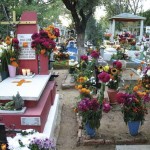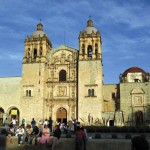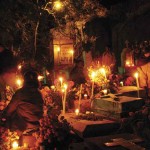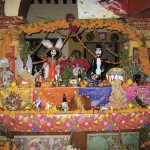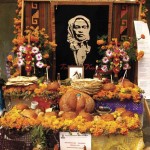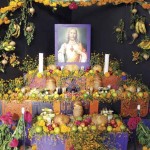Oaxaca
The colonial heritage of Oaxaca, Mexico is reflected in grand stone buildings and churches, wide avenues and beautiful plazas. The capital of Oaxaca State, the most highly indigenous state in Mexico, Oaxaca city, with a population of approximately 265,000, is cosmopolitan yet manageable. Many of the grand colonial buildings in its center have been converted into museums. These include the former Government Palace; the huge and rambling former monastery of Santo Domingo, which houses the museum of Oaxacan cultures and the Jardín Etnobotánico; and the current Museo de Arte Contemporáneo, and Museo Rufino Tamayo, which includes collections of pre-Columbian art as well as special exhibits. Considered one of the capitals of the Mexican art scene, Oaxaca also abounds with smaller museums and galleries.
The cathedral in the center of town is surrounded by a zócolo or central plaza, so ample that there are several different sitting (and strolling) areas, some sunny and some shaded by tall trees, as well as the arcades on either side which house numerous cafes and restaurants. Oaxaca offers the visitor many excellent restaurants featuring the distinctive local cuisine, and a lively nightlife, as well as numerous galleries showcasing a variety of crafts for which the State of Oaxaca is justly famous.
Naturally, there are many churches that are worth a visit, and the local markets are bustling—full of life and full of typical Mexican produce and Oaxacan specialties. The latter include several varieties of moles, (complex chile and chocolate-based cooking sauces), more chocolate than you could possibly imagine, and (yes) fried grasshoppers. Oaxaca is also famous for mezcal, which like its cousin tequila, is made from agave.
Oaxaca city sits at the junction of three valleys known as las valles centrales, each of which is home to villages known for specific crafts or for pre-Columbian archeological sites. First among these is Monte Albán, the ancient Zapotec capital and one of Mexico’s most impressive ancient sites.
As in most of Mexico, el día de los muertos, the Day of the Dead, is celebrated in earnest in Oaxaca. Families spend days at the cemeteries, painting and decorating the graves of family members, praying, celebrating and sharing food. Some of the nearby valley towns are well known for their día de los muertos celebrations, and there are a few street processions and performances in Oaxaca itself.
What really makes the Day of the Dead in Oaxaca, however, are the altars—and they are everywhere. Nearly every public building, from museums to hotels to galleries and shops, has an altar in the lobby or entrance, commemorating ancestors. Mountains of marigolds, candles, textiles and skeleton dolls are artfully and often ingeniuosly combined with the favorite foods and drinks of the honored ancestor to create these ofrendas, which are an art form in themselves.
This, of course, makes late October a perfect time to visit Oaxaca. An easy overnight bus trip (12 hours, Mexican luxury bus) from San Cristóbal de las Casas, it is a skip and a jump from Guatemala, with a very pleasant place to stop on the way there or back.
Travelers, however, should check on the political situation before embarking on their journey. In 2006 Oaxaca was rocked by a local teacher’s strike, massive demonstrations and riots. While it had returned to a peaceful state by early 2007, the underlying issues have not been resolved.
photos by Victoria Stone
- Day of the Dead altar commemorating an ancestor
